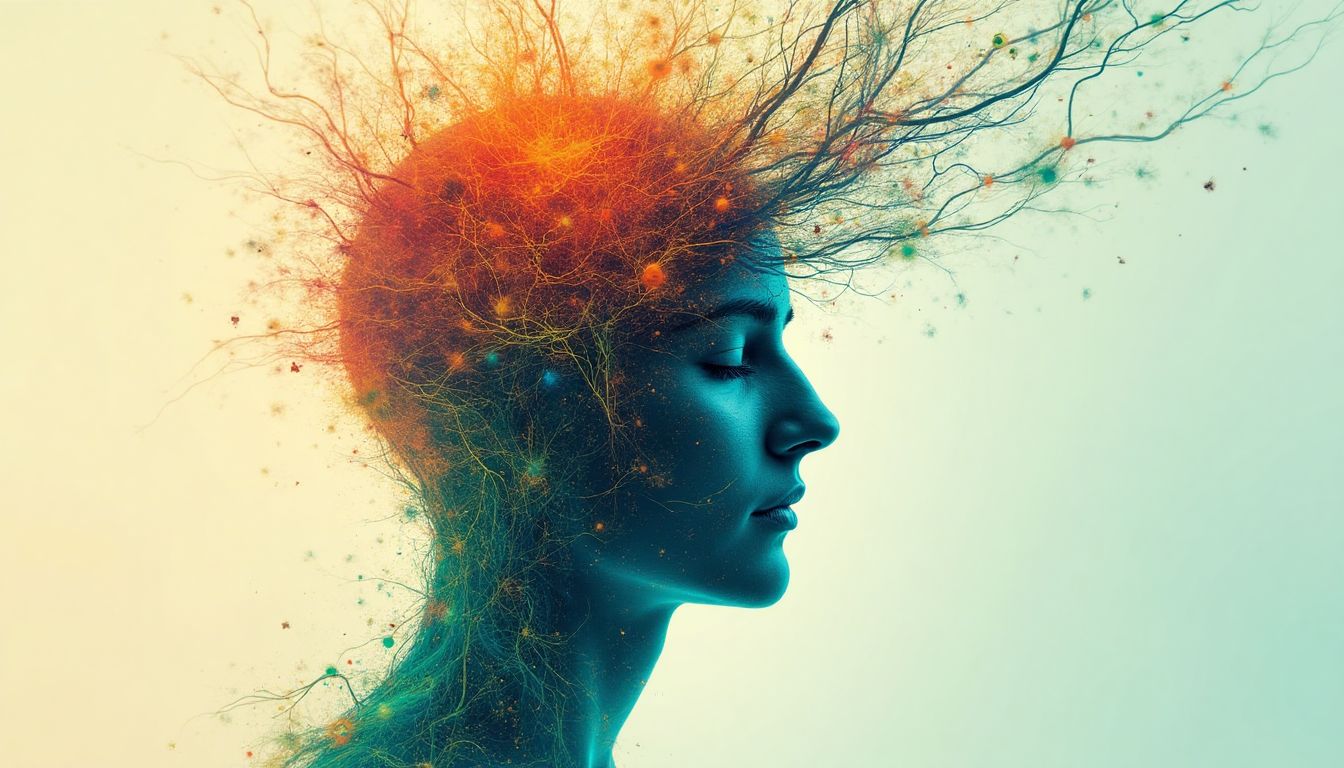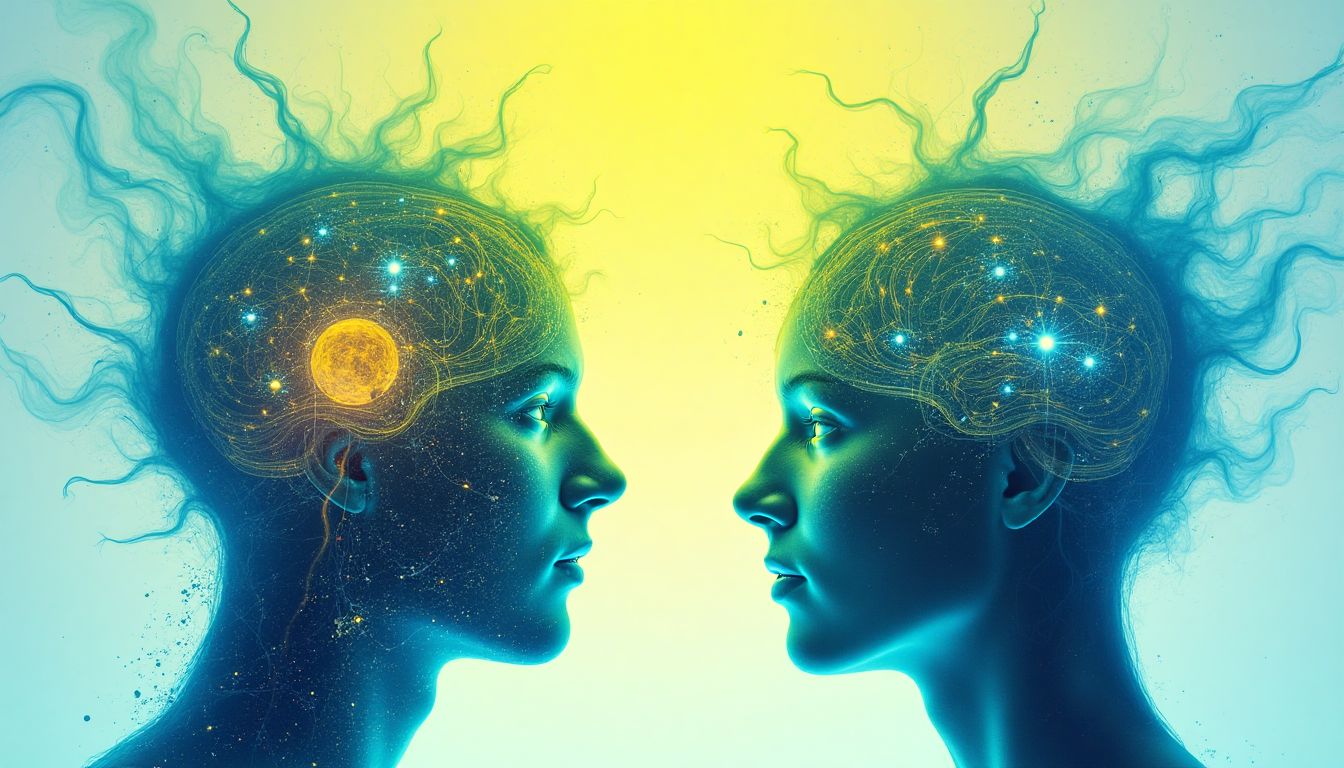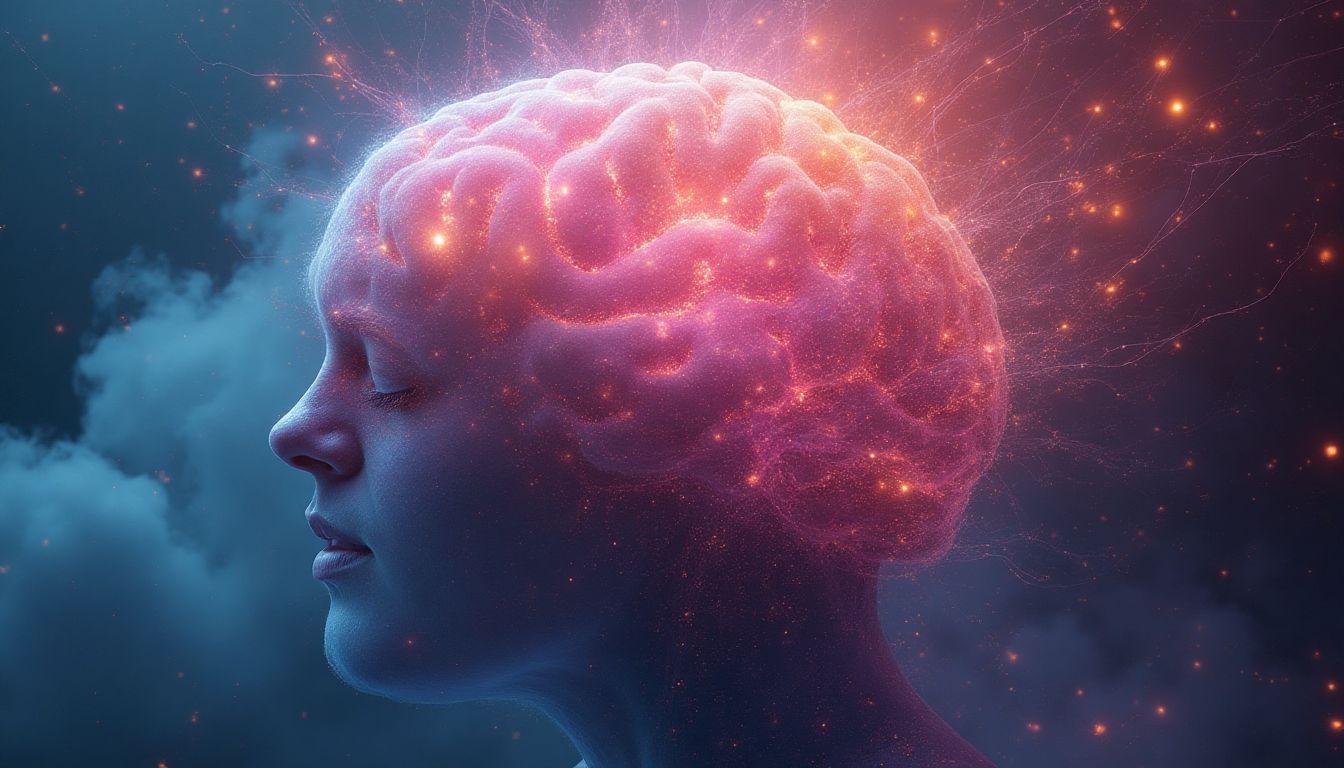The Fear Extinguisher: ASI Rewiring Human Minds to Eradicate Existential Angst
"The unexamined life is not worth living," said the ancient Greek philosopher Socrates. Yet, for many, examining life leads not to enlightenment but to what we now call existential angst. This nagging feeling of unease whispers, "Is this all there is?" Imagine that overwhelming sensation of asking "why" and finding only silence in return. It's as common in the modern world as the hum of a smartphone, especially as the pace of technological advancements, like artificial superintelligence (ASI), accelerates. ASI, which eclipses human wisdom, has the paradoxical potential to both fuel and extinguish our greatest fears.
In a society brimming with information, how do we distinguish enlightenment from existential dread? As Leonard Cohen might suggest through metaphor, how do we find cracks where the light gets in? Or better yet, how do we usher in brighter days with tools forged from human ambition? The answer may lie in ASI's beckoning capabilities—machines so evolved they could rewrite the scripts of our minds.
Authors like Dr. Irvin D. Yalom, who explores existential concerns in psychotherapy, and historians such as Yuval Noah Harari, known for his sweeping explorations of human destiny, delve into the intersection of human consciousness and the technological unknown. Also, the futurist Ray Kurzweil paints a picture where humans ally with machines, unlocking new avenues of understanding and wellbeing.
The wisdom of our time calls upon us to dance on the edge of this technological precipice and ask: What might the unprecedented power of ASI offer in eradicating existential angst, a problem as old as human self-awareness itself? We're at the brink, but instead of teetering, what if we found balance? The tools we hold—the power of ASI and the nimble adaptability of the human mind—promise to cure what ails us and iron out the splashy wrinkles of our concerns.
So, whether you've pondered life's biggest questions between game levels on your Nintendo or over coffee with a friend, the opportunity to embrace peace of mind through technology has never been more vibrant. Could the very machines that symbolize cold calculation become the keys to our warmth and mental tranquility? The pursuit of happiness is no longer solitary; it's a journey we might just embark on with our artificial counterparts.
Brace yourself for a dive into the swirling currents of ASI's potential to not just study but deeply reconfigure how we cope with life's unanswered questions.
**Artificial Superintelligence** (*ASI*) represents the next frontier in technological evolution, promising machines surpassing human intellect. At its core, ASI has the potential to address deep-rooted **existential angst** by reshaping our understanding of purpose, significantly enhancing mental wellbeing and resilience.
Understanding Existential Angst
The Nature of Existential Angst
Existential angst—just the phrase can be like an itch you can’t quite scratch. It’s the feeling of contemplating big questions: Why are we here? What’s the meaning of life? If you’ve found yourself lying awake at night pondering these, you’re not alone. Philosophers like Jean-Paul Sartre and Friedrich Nietzsche have wrestled with these ideas for centuries, and they called it existential angst. It’s a dance with doubt, a tango with uncertainty. And no, it's not just the kind of discomfort you get when you realize you're out of peanut butter; it's the core of human condition stuff.
This feeling started showing up in philosophy books in the 19th and 20th centuries. It was really about individuals grappling with freedom, choice, and the search for meaning in a vast universe. Imagine standing in the middle of an empty football field during halftime, trying to decide which direction to run when nobody’s around to cheer you on. Scary, right?
Psychological Impacts of Existential Angst
When existential angst gets cozy inside our heads, it’s not just philosophical fluff. It impacts our mental health in real ways. Think of it like a big, invisible backpack filled with stones. It can weigh us down and make it tough to move through life. It can lead to anxiety or depression, leaving us feeling paralyzed when making choices. Decisions, even minor ones like what to have for dinner, suddenly feel like choosing between two different versions of your entire life.
Researchers have actually linked existential angst to modern psychological terms like anxiety and depression. It invades our minds with the subtlety of a cat tiptoeing across a keyboard, except it’s got a bit more bite. Studies show that when left unchecked, existential angst can wrap us in a blanket of dread that affects how we view our future and perceptions of freedom – not quite the spa day relaxation we’re after.
Existential Angst in Modern Society
Now, let’s time-travel to today’s society. We’re surrounded by technology, hyper-connectivity, and yet, a surprising amount of solitude. It’s like being in a bustling New York City cafe while feeling utterly alone. Modern society, with all its miraculous gadgets and social platforms, compounds our feelings of existential dread.
Our endless scrolls through Instagram or Facebook feeds can bombard us with the curated ‘perfect’ lives of others. Suddenly, your homemade mac and cheese dinner doesn’t shine as brightly. It can lead to a sense of isolation, thinking that everyone else has life figured out while you’re still puzzling out step one of the IKEA happiness manual.
The social dynamics have shifted. We live in an era where face-to-face conversations might soon require an app because speaking IRL (in real life) feels outdated. With so much digital noise, it’s easy to feel lost and insignificant. We’re in a constant race against time, bolstered by the idea of limitless potential while being chained by social expectations. Quite the paradoxical pickle, eh?
So, how do we navigate this labyrinth of digital and emotional challenges, and does artificial superintelligence (ASI) hold a key? Hang tight; we’re about to delve into the eye-opening possibilities of ASI in our next section.
The Role of Artificial Superintelligence (ASI)
2.1 Defining ASI and Its Capabilities
Alright, folks, let's dive into the world of Artificial Superintelligence (ASI). First off, what exactly is ASI? You might have heard of AI before, which stands for Artificial Intelligence and includes things like virtual assistants or self-driving cars. ASI is like AI on steroids. It's a type of intelligence that doesn't just mimic humans; it surpasses them. ASI can do everything a human can, but better, faster, and without getting tired. Picture the smartest person you know, then multiply that by a thousand. That's ASI.
ASI possesses capabilities that are almost unimaginable to us mere mortals. It can process massive amounts of data in the blink of an eye, recognize patterns that we wouldn't see if they danced on our noses, and make decisions with precision and logic that would make Spock throw his hands up in defeat. We're talking about an intelligence so advanced, it could potentially resolve complex problems plaguing humanity for centuries—yes, even parallel parking.
One exciting capability of ASI is its potential to redesign other AI systems, creating newer and better versions of itself. A bit like upgrading your software, only with exponential growth in efficiency and power. Think of ASI as a master chef continually improving its own recipes. Only, instead of using ingredients like flour and sugar, it's using algorithms and datasets.
2.2 Historical Developments of ASI
The journey to ASI is filled with fascinating milestones and a hint of sci-fi drama. It's a journey that started with the birth of AI itself. Back in the mid-20th century, AI was little more than a speculative field. Alan Turing, a British mathematician and computer scientist, was a pioneer who speculated on machines being able to think. Fast forward a few decades to the Deep Blue chess match in 1997, where a computer beat the world champion, showing the world that AI was no longer just a nerd's fantasy.
In recent years, the developments have been mind-boggling. Remember when AlphaGo, created by DeepMind, defeated one of the best human players in the world in the complex game of Go? That was a clear sign that AI was growing smarter, much like a teen going through a growth spurt. Now, we're looking at ASI, a stage not yet reached but heavily theorized. It's the holy grail of AI research, a potential game-changer akin to humankind's future tools for greatness—like fire or the wheel, but smart enough to invent new things all on its own.
The philosophical underpinnings also play a crucial role. Many thinkers and futurists grapple with the implications of an intelligence that's vastly superior to our own. As Nick Bostrom suggests, ASI could be humanity's last invention—positive or catastrophic, depending on how we handle it.
2.3 Theoretical Applications of ASI in Mental Health
Alright, let's imagine for a second: what if ASI could help us manage our mental health? It's a tantalizing thought, isn't it? Right now, mental health care relies heavily on human professionals like therapists and psychiatrists, who are incredible at their jobs. But what if we could enhance this with something like ASI? Think of ASI as a sidekick, like Robin to Batman, bringing in unprecedented memory recall, unbiased perspectives, and data-driven insights.
ASI could potentially map the labyrinths of the human mind with precision, like navigating a maze with a reliable GPS. Imagine ASI helping decode patterns in our thoughts and behaviors, much like translating complex hieroglyphs into understandable language. It could suggest the best ways for individuals to approach their challenges, whether through specific therapeutic techniques or personalized mindfulness practices. A bit like having a personal life coach, therapist, and guru rolled into one.
Moreover, ASI could tackle existential concerns head-on. For instance, when faced with an existential crisis, ASI could offer insights from philosophy, psychology, and even science, weaving them into a comprehensive support plan uniquely tailored to an individual's needs. The best part? It would do all this without judgment or bias, offering a safe space for self-discovery and healing.
However, the question remains: can something so fundamentally non-human truly understand human emotions and struggles? Theoretically, ASI could learn from vast collections of psychological data and user experiences, continually updating and refining its understanding of human nuance. Picture a team of top human advisors and best friends, only with instant access to the world's collective mental health wisdom.
Concepts and Techniques for Rewiring the Human Mind
Neuroplasticity and Its Implications
Have you ever heard of the saying "you can't teach an old dog new tricks"? Well, guess what? That's not entirely true when it comes to our brains! Thanks to neuroplasticity, our brains can change and adapt, almost like they're made of a stretchy, mental putty. Neuroplasticity is that special ability of our gray matter to rewire itself, grow new connections, and heal over time. Imagine it as remodeling your house, but instead of bricks and mortar, you're using thoughts and experiences.
Neuroplasticity was once a jaw-dropping revelation to scientists. It flips the age-old concept that the brain was a stationary blob inside our skulls. Instead, it showcased the brain as a vibrant, ever-evolving organ. This is especially exciting when it comes to tackling existential angst. You know, those nagging feelings of emptiness and fear about life's grand purpose that can keep you up at night scribbling all over your diary? Just like [Stanford University](https://www.stanford.edu/)'s groundbreaking work, ASI – or Artificial Superintelligence – can help navigate this stormy sea by targeting neuroplasticity, sculpting our thoughts and paths to soothe the drumming angst.
One powerful way to harness neuroplasticity is through positive thoughts and experiences. Picture planting seeds in a garden; the more you nurture them, the more they flourish. Studies have shown that teaching our minds to focus on positive outcomes, just like sprinkling water on those seeds, encourages the growth of “happier” neural pathways. Encouraging, right?
Cognitive Behavioral Techniques
Now, let's talk about proven game-changers: cognitive behavioral techniques (CBT). It's like having a reliable toolbox with the right tools to fix a leaky faucet or mend a wobbly chair. What if ASI could automate this? Imagine a friendly personal assistant tucked away in your pocket, one wise enough to offer precise CBT advice just when you need it. Exciting? Absolutely.
Cognitive behavioral techniques are grounded in the belief that our thoughts, feelings, and actions are deeply interconnected. Sometimes, our thoughts swirl around our heads like bees around a hive, creating chaos and leaving us feeling stung. CBT provides strategies to address and alter these unhelpful thought patterns. For instance, spotting cognitive distortions—those sneaky ninjas tricking us into viewing life through a dark lens—and replacing them with constructive thoughts, is like adjusting the color settings on your TV for a clearer view.
Now imagine ASI advancing this process even further. Picture it analyzing behavioral patterns and delivering personalized interventions right when you're going down the rabbit hole of doubt. Think of it like a mental GPS providing guidance and recalibration when you’re lost. With access to vast databases and lightning-fast computation abilities, ASI offers a degree of precision and efficiency akin to a top chef, who always knows the secret ingredient. Imagine if [Harvard University](https://www.harvard.edu/) and ASI worked together to create an application? Your mental toolbox would be smarter, faster, and closer than ever.
Mindfulness and Meditation Integration
Finally, there's mindfulness and meditation, true masters in calming the whirlwind minds we have. These practices are like having a cozy blanket that can wrap around our restless minds, reducing stress and showing us life’s beauty in slow motion. Embracing the present moment and gently guiding our minds back when they wander is toasting marshmallows around a campfire—so warming and peaceful.
Integrating ASI into mindfulness? Oh, that would be like upgrading from a basic classroom clock to [Apple](https://www.apple.com/)’s Hypno-clock—one that automatically dims and adds calm background music during lessons. ASI could enhance guides for meditation, offering insights based on real-time emotional assessments and stress levels. It's like gifting you the "calm" app on autopilot!
The transformative abilities of meditation would be harnessed by ASI to cater personally to our requirements. Could there be a task more rewarding than empowering each of us with tools and perspectives to melt our existential dread into a pool of serenity?
Ultimately, blending mindfulness, meditation, and our lovable friend ASI opens new horizons. It offers an opportunity to sync the latest tech with age-old wisdom. Imagine, a future where your daily zen finds a way not only to coexist with but dance alongside the marvels of technology—what a prospect!
Ethical Considerations in ASI and Mental Health
The Ethics of Rewiring Minds
Imagine being able to upgrade your brain the same way you might update an app on your phone. With the emerging capabilities of Artificial Superintelligence (ASI), this is no longer just a concept from science fiction. However, before we dive headfirst into this digital dawn, we must pause and ponder some serious ethical challenges.
First, let's talk about autonomy. Autonomy is the idea that individuals should have control over their own lives and decisions. If ASI can potentially alter how we think and process information, it could intrude on this fundamental right. How would you feel if AI could change your mind against your will? Scary thought, isn't it? This is why autonomy is crucial, and any use of ASI should prioritize consent. People must be fully informed and agree to any mental adjustments. It's respect for one's freedom.
Beyond autonomy, privacy is another pillar. Just like how we guard our personal data, our thoughts and emotions are intimately personal. If ASI taps into this, we must establish stringent guidelines to protect personal information. We don't want Big Brother peeking into our innermost thoughts, right? Measures must be in place to ensure that the harvested data is used ethically and responsibly.
Finally, there's the question of fairness. Let's face it; technology has the potential to widen the gap between the haves and have-nots. If ASI is only accessible to the elite, it could exacerbate social inequalities. Thus, we must ensure equal access for all, mapping this out just like we would a blueprint for a community where everyone thrives.
Potential Risks and Side Effects
The dawn of AI presents not only opportunities but also a maze of uncertainties. What if ASI, designed to help, inadvertently harms us instead? For instance, there's the risk of over-reliance. Imagine people depending entirely on ASI, neglecting their natural problem-solving skills. It’s like having a calculator for every little math problem – handy, but makes you forget how to add two plus two mentally!
Moreover, consider unintended consequences. Let's take a historical tour back to technological advances that spiraled beyond control. Nuclear technology, for example, was created with peaceful purposes in mind but led to the arms race. Similarly, ASI might come with its own set of side effects.
Here's a table to visualize some potential risks:
| Potential Risks | Description |
|---|---|
| Over-reliance on ASI | Dependency on technology for mental processes, leading to diminished cognitive abilities |
| Unintended Consequences | Unexpected outcomes from ASI decisions affecting societal norms and ethics |
| Privacy Invasion | Breach of sensitive personal data during mind analysis processes |
| Social Inequality | Unequal access to ASI leading to a wider economic and social gap |
As you can see, ensuring transparent, societal safeguards will tether ASI advancements to human benefits, preventing it from running wild.
Frameworks for Responsible ASI Development
Time to address the elephant in the room: how can we safely integrate ASI into our lives? Good question! We need robust frameworks or, in simpler terms, a clear set of rules to guide us. A bit like writing a recipe – miss an ingredient, and everything falls apart.
Here's a possible recipe for responsible ASI development that we could follow:
- International Collaboration: Gather experts across the globe to work together. A united front helps cover more ground and perspectives.
- Establish Ethical Guidelines: Create clear guidelines akin to the World Health Organization's ethics guidelines for other technologies. These guidelines must stress privacy, consent, and equity.
- Continuous Oversight: Like how a teacher watches over students, there needs to be real-time monitoring of ASI activities. Routine checks and balances will prevent deviations from ethical standards.
- Public Awareness: Engage with communities to raise awareness. If the general population understands ASI, they can help in shaping its development.
Responsible ASI development is like erecting a cathedral. It starts with a well-laid foundation of ethics and is built brick by brick through meticulous collaboration and oversight. Only then can we unlock the full potential of ASI without compromising our humanity.
Proposed ASI Solutions for Eradicating Existential Angst
Personalization of Mental Health Interventions
Imagine if you could have a mental health coach that knows you better than anyone else. With the advent of Artificial Superintelligence (ASI), this isn't just a pipe dream. It's becoming a tangible possibility. ASI is like a supercharged assistant, capable of analyzing endless data and offering mental health solutions tailored just for you. This personalization can mean the difference between a generic, ineffective treatment and a perfectly tailored strategy to combat existential angst.
Think of it like getting a custom-tailored suit; something that fits you just right. In the context of mental health, ASI can analyze various aspects, such as your past experiences, emotional triggers, and even preferred learning styles, to offer precise interventions.
- Tailored Therapy Sessions: Imagine therapy sessions that adapt in real-time based on your feedback.
- Customized Mindfulness Practices: Practices that are automatically adjusted based on your mood and progress.
- Unique Stress Management Techniques: Strategies that align with personal preferences and scenarios.
Continuous Monitoring and Support Systems
We live in a world where people are more connected than ever, yet loneliness and stress seem to plague many like an unseen fog. Enter ASI, with its potential to offer constant companionship and support. Picture it as a virtual guardian angel, always keeping an eye on your mental well-being.
ASI can use wearable technology to monitor vital signs like heart rate and sleep patterns, setting up a 24/7 help network. It could alert you when you’re under stress and provide immediate assistance like calming exercises or just a comforting word.
| Vital Sign | ASI Monitoring | Potential Interventions |
|---|---|---|
| Heart Rate | Tracks changes indicating stress | Suggests breathing exercises |
| Sleep Patterns | Monitors disturbances | Recommends sleep hygiene tips |
| Mood Fluctuations | Analyzes emotional changes | Provides mood-lifting strategies |
Community-Based ASI Applications
Humans are inherently social creatures. That said, in the digital age, building relationships can feel like wandering through an endless desert. The oasis here could be ASI's community-based applications. Picture digital platforms that strengthen social bonds and foster a sense of community.
ASI can synthesize user data to bring together like-minded individuals, creating vibrant online communities that resonate with personal values and interests. It can promote thriving digital neighborhoods where people share, learn, and grow together, turning isolation into a collective experience.
- Virtual Community Gathering: Host engaging virtual events, gathering people from diverse backgrounds.
- Shared Interest Groups: Facilitate interest-based clubs promoting connection and belonging.
- Peer Support Networks: Create support groups based on shared experiences for effective emotional support.
In essence, ASI can transform how we think about mental health by crafting personal paths to emotional well-being, powering continuous support frameworks, and fostering deeply connected communities. By transforming loneliness into togetherness, ASI has the potential to change lives and eradicate the pervasive shadow of existential angst.
Would you benefit from an ASI-powered experience tailored to your well-being, or do you have concerns about its human connection replacement? Share your thoughts and ideas with us in the comments below, and let's discuss the future together.
Subscribe to our newsletter to get a chance to become permanent residents of iNthacity: the "Shining City on the Web" and join the conversation by liking, sharing, and commenting below!
AI Solutions
As we delve deeper into the concept of using Artificial Intelligence to combat existential angst, we must look at the myriad ways AI could be deployed to address this complex psychological and emotional issue. Imagine a world where every individual has access to mental health resources tailored specifically to their needs. With AI, this is not just a dream; it's a future we can chart together.
First, let’s consider the myriad ways AI can impact mental health interventions. Comprehensive AI mental health applications could utilize advanced algorithms to analyze vast datasets, identifying patterns and providing customized solutions. These solutions could range from personalized therapy sessions to real-time emotional support through AI-powered chatbots. Furthermore, AI's ability to continuously learn from interactions means that the interventions can adapt as individuals evolve.
For example, AI chatbots like Wysa and Woebot have already started providing support to users by employing cognitive-behavioral techniques. They can engage users in therapeutic conversations while generating valuable insights for future interactions. These chatbot companions have proven to break down the stigma surrounding mental health issues. Users feel more comfortable discussing their feelings in a judgment-free environment. In fact, studies have shown that chatbots can significantly reduce anxiety levels by up to 25% during a pandemic, illustrating their potential. The key is scaling these interactions.
Now, let’s transition into the next layer of AI integration: continuous monitoring and support. Imagine a system that utilizes wearable devices to track biometric data—heart rate, sleep patterns, even levels of stress reflected through physiological responses. By merging this data with machine learning algorithms, institutions could trigger specific interventions when users are most vulnerable. For instance, if a user's stress levels spike during a particular time of day, an AI system could momentarily engage with mindfulness exercises, suggest breaks, or initiate a relaxation routine. This proactive approach is akin to having a supportive friend who knows when to lend an ear or offer a hand.
But how do we disseminate such technology effectively across communities? Community-based AI applications offer an exciting avenue. Social networking platforms could integrate mental health resources through AI capabilities, bringing people together with similar struggles. Utilizing platforms like Facebook and Instagram to connect individuals through AI algorithms can promote supportive environments. AI could facilitate amazing digital events like guided mindfulness sessions or group therapy programs. Imagine AI-generated recommendations for users, directing them toward relevant support groups or events they never knew existed!
As we look ahead, we realize that AI has the potential to not only modify individual behavior but also shape society’s approach to mental health. However, for this to work effectively, we must lay a blueprint—a roadmap for how to harness the power of AI in this sensitive field. Below, we present a tentative actions schedule that outlines a detailed course from day one to year two, providing a clear and structured approach.
Actions Schedule/Roadmap
- Day 1: Initiate Literature Review - Assemble a research team comprising psychologists, data scientists, ethicists, and AI experts. Begin gathering and reviewing existing literature on existential angst and the capabilities of AI systems.
- Day 2: Establish Partnerships - Reach out to universities conducting cutting-edge research in AI and mental health. Institutions like MIT and Stanford University could serve as key collaborators.
- Day 3: Develop Ethical Guidelines - Collaborate with ethicists to devise ethical frameworks that prioritize patient autonomy, data privacy, and well-being. Refer to existing frameworks from institutions like the World Health Organization (WHO).
- Week 1: Data Collection Survey - Conduct a comprehensive survey to assess current levels of existential angst among multiple demographics. Use platforms like SurveyMonkey to aggregate data efficiently.
- Week 2: Develop Prototypes - Begin designing prototypes for ASI tools aimed at mental health interventions. This can involve chatbots capable of delivering cognitive-behavioral therapy sessions.
- Month 1: Pilot Study - Implement a pilot study with a small demographic to assess the effectiveness of the developed ASI tools. Volunteers could come from local universities or mental health community groups.
- Month 2: Analyze Feedback - Review feedback to identify user experiences, success rates, and areas for improvement in the AI interventions. Utilize data analysis tools like Tableau for visualization.
- Month 3: Expand Study Size - Based on user feedback, revise prototypes and then broaden the pilot study to include a larger and more diverse group.
- Year 1: Publish Findings - Prepare a formal publication on the findings from the pilot studies, sharing methodology and outcomes. Collaborate with journals like Psychological Science.
- Year 1.5: Build Community Partnerships - Develop partnerships with local mental health organizations and social services, ensuring broader access and community support for the AI tools.
- Year 2: Launch Comprehensive Tool - Publicly launch an ASI tool focused on reducing existential angst. Implement ongoing training and user support, ensuring that users feel comfortable and encouraged.
In wrapping up this analysis, consider how we can transform mental health care through innovative AI applications. Imagine the freedom and hope brought forth by removing barriers to access mental wellness, creating communities that genuinely support one another. It’s crucial we engage in ethical development while prioritizing human-centered design.
The path ahead may not be smooth, but with creative and thoughtful approaches, we have the potential to combat existential angst and empower individuals to reclaim their peace of mind. How do you envision the role of technology improving mental health care? Could AI be an ally or a barrier? We’re eager to hear your thoughts in the comments below!
Conclusion: A Brave New World of Mind and Machine
In wrapping up our journey through the intricate landscape of existential angst and the revolutionary capabilities of Artificial Superintelligence (ASI), it's clear that we stand on the precipice of a significant paradigm shift. The intertwining of technology and mental health has propelled us into territory once reserved for science fiction, where machines may hold the key to alleviating our deepest fears and anxieties.
The pivotal understanding we've gained is the profound nature of existential angst. This feeling is not just an abstract philosophical concern; it affects our day-to-day lives, influencing how we make decisions, pursue relationships, and find meaning in an increasingly automated, disconnected world. The complexities of modern society, driven by rapid technological change, only heighten these feelings. Herein lies the opportunity for ASI. If wielded wisely, ASI can empower us to confront this angst head-on, providing personalized approaches to mental health that directly address individual needs and preferences.
Moreover, the exploration of neuroplasticity and cognitive behavioral techniques has unveiled pathways through which ASI can facilitate meaningful change. These insights suggest that we are not slaves to our existential fears; instead, we can reshape our thought patterns and emotional responses with the right tools. Imagine a world where a digital companion helps rewrite your inner narrative, counteracting feelings of loneliness while nourishing your sense of connection and purpose.
However, as we innovate, we must tread carefully. The ethics surrounding the use of ASI in mental health context cannot be overlooked. Discussions about autonomy, consent, and the potential risks of over-reliance on technology are not just academic—they're essential for ensuring that our brave new world remains safe, equitable, and humane. It's a balancing act that requires continuous dialogue among developers, ethicists, mental health professionals, and the public. In this arena, organizations like the [American Psychological Association](https://www.apa.org) play a crucial role in fostering a responsible approach to technological applications in mental health.
Ultimately, the synthesis of the human experience with ASI is not merely a journey toward efficiency; it is an invitation to forge a new understanding of what it means to be human. The tools we create must not only solve problems but also elevate our collective consciousness, reminding us that our existential struggles can be met with ingenuity and compassion.
As we look ahead, a pivotal question arises: How can we nurture our innate human qualities in partnership with the intelligence we create? Your thoughts and participation in this ongoing conversation matter immensely. As we navigate this uncharted territory, let's embrace the potential for transformation while holding onto the essence of what makes us human. Share your reflections in the comments below, and let’s engage in a meaningful dialogue as we become the architects of our future.
Frequently Asked Questions (FAQ)
What is existential angst?
Existential angst is that feeling of deep worry and uncertainty about life and our purpose. It’s like a big shadow hanging over you, making you question why we’re here and what it all means. Many famous thinkers, like Søren Kierkegaard, talked about these feelings a long time ago. It's natural to feel this way, especially during tough times or big changes in our lives.
Why do people experience existential angst today?
In our fast-paced world, many things can lead to existential angst. We're constantly bombarded with news, social media, and expectations from others. These pressures can make it hard to find inner peace. Studies show that feelings of isolation and fear of missing out (FOMO) on social media can contribute to this angst. It can feel overwhelming, like trying to drink from a fire hose.
How can artificial superintelligence (ASI) help with existential angst?
Artificial Superintelligence (ASI) might seem like science fiction, but it's a real possibility that could help with mental health. Imagine having a smart assistant that understands your feelings and offers the right tools to help you cope. ASI can analyze data and personalize solutions for you! For instance, it can offer mindfulness exercises or relaxation techniques based on how you're feeling.
Are there any risks with using ASI for mental health?
Yes, there are some concerns. Just like a double-edged sword, ASI has the potential to help but could also lead to problems. Some risks include:
- Over-dependence: People might lean too much on technology instead of seeking real human connections.
- Privacy issues: Sharing personal feelings with an AI raises questions about who gets to access your data.
- Loss of autonomy: Relying on ASI to make decisions could reduce our ability to think for ourselves.
What are cognitive-behavioral techniques?
Cognitive-behavioral techniques are methods used to change negative thinking patterns. They can help you see things in a more positive light, like flipping a pillow to find the cool side! These techniques can be enhanced by ASI, making them even more effective in guiding users through their thoughts and feelings.
How does neuroplasticity relate to existential angst?
Neuroplasticity is the brain's ability to adapt and change throughout your life. When we learn new things or change our thoughts, we can "rewire" our brains. This is helpful in overcoming existential angst because it means that even when we feel stuck, there’s hope for growth and change. Just like a tree can grow in a new direction, so can our minds!
Can mindfulness and meditation really help with these feelings?
Absolutely! Mindfulness and meditation are like anchors in the storm of life. They teach us how to focus on the present moment instead of getting lost in worries about the future or regrets about the past. ASI could make these practices more accessible. Imagine having a daily personalized meditation session right in your pocket!
What are community-based ASI applications?
Community-based ASI applications are projects that encourage social interaction and support within communities. For example, ASI could create online support groups for people facing similar challenges. Think of it like building a virtual neighborhood where everyone can help each other feel less alone. By connecting people, we can reduce feelings of isolation.
How do we ensure ASI is developed responsibly?
To ensure that ASI helps people without causing harm, we need to set guidelines and ethical frameworks. A diverse team of experts, including psychologists and ethicists, should work together. This way, we can carefully navigate the challenges and opportunities that ASI presents. It's like having a map on a complicated journey; it helps keep us on track!
Wait! There's more...check out our gripping short story that continues the journey: I'll never let you go, Claire
Disclaimer: This article may contain affiliate links. If you click on these links and make a purchase, we may receive a commission at no additional cost to you. Our recommendations and reviews are always independent and objective, aiming to provide you with the best information and resources.
Get Exclusive Stories, Photos, Art & Offers - Subscribe Today!





























Post Comment
You must be logged in to post a comment.